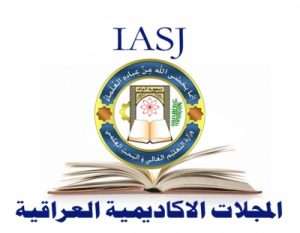Submissions
Submission Preparation Checklist
-
Author Information
-
Have you provided all authors' names, affiliations, and ORCID iDs (if applicable)?
-
ORCID iD is required for all authors, as this enhances author identification and linking to published works.
-
-
Article Metadata
-
Have you provided the article’s title, abstract, and keywords?
-
Have you selected the correct article type (e.g., Research Article, Review, etc.)?
-
-
Compliance with Journal Guidelines
-
Does the manuscript follow the author guidelines provided by MJET?
-
Is the manuscript written according to the journal’s formatting requirements (e.g., font, reference style)?
-
Is your manuscript title clear and accurately descriptive of your content?
-
-
References and Citations
-
Have you checked that all references are properly formatted and cited according to the journal’s style guide?
-
Have you cross-checked the references to ensure they are accurate and complete?
-
-
Ethical Compliance
-
Does your submission adhere to ethical standards in research and publication?
-
Have you disclosed any conflicts of interest (if applicable)?
-
Have you obtained permission for use of copyrighted material, if necessary?
-
If applicable, have you included the Ethical Approval for human or animal studies in your manuscript?
-
-
Figures and Tables
-
Are all figures and tables labeled clearly with captions?
-
Are high-quality images and graphs used, with proper attribution for any third-party content?
-
Have you ensured that all figures and tables are placed in the manuscript at the correct position or as supplementary material?
-
-
Supplementary Material
-
If applicable, have you uploaded any supplementary materials (e.g., data sets, additional files)?
-
Are supplementary materials clearly referenced in the manuscript?
-
-
Statement of Originality
-
Have you confirmed that the manuscript is original, and has not been published elsewhere or is under consideration for publication in another journal?
-
-
File Format
-
Is your manuscript uploaded in the correct file format (Word)?
-
-
ORCID iD
-
-
If you don't have an ORCID iD, please register for one here: https://orcid.org/register
-
Articles
Muthanna Journal of Engineering and Technology (MJET)
Copyright Notice
MJET publishes articles under the terms of the Creative Commons Attribution-NonCommercial 4.0 International License (CC BY-NC 4.0). This license allows others to remix, adapt, and build upon the work for non-commercial purposes, as long as proper credit is given to the original author(s) and the journal.
Privacy Statement
The names and email addresses entered in this journal site will be used exclusively for the stated purposes of this journal and will not be made available for any other purpose or to any other party.
















